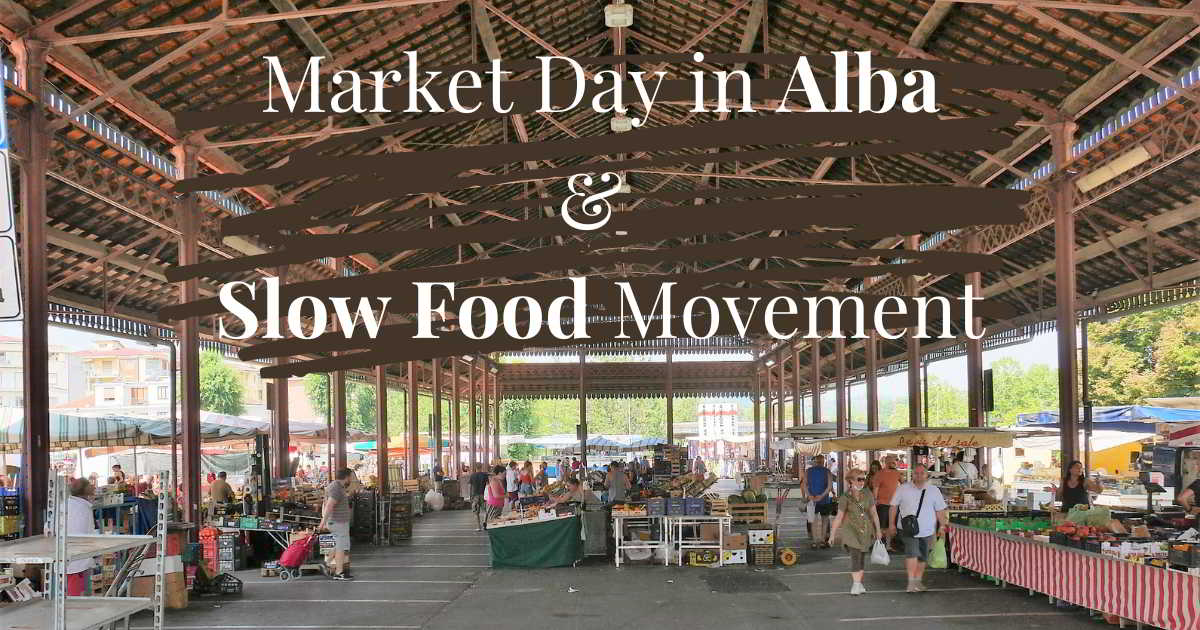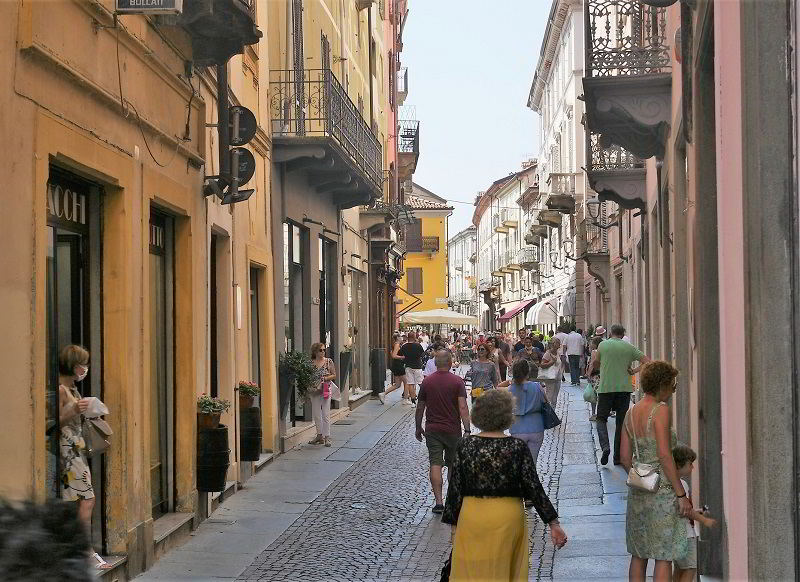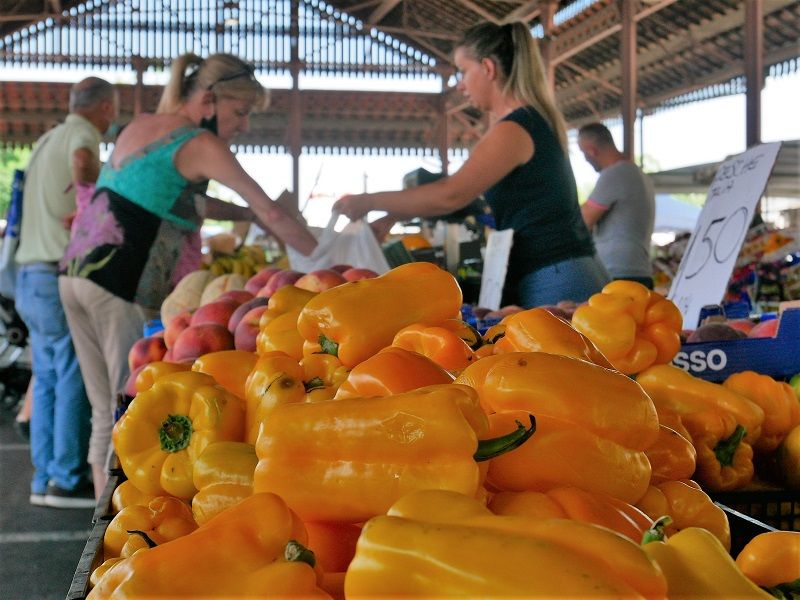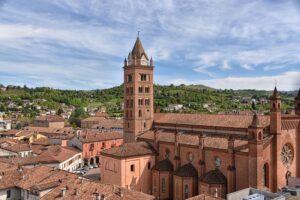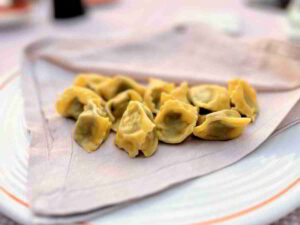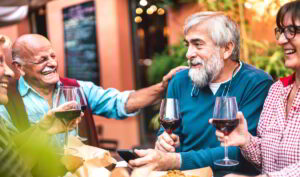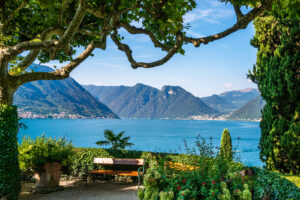Saturday Market in Alba: Shopping, Culture and Traditions
Saturday morning marks the main market day in Alba, transforming the streets into vibrant stalls filled with color and a lively atmosphere!
Alba’s Saturday market showcases a blend of traditional and local produce alongside everyday items and affordable clothing, drawing both tourists and locals alike.
When exploring the charming town center with a local guide, market day becomes much more than just a shopping day in Alba. From the historic location of the market held centuries ago to the social importance that this event held in the past, the market is a lively element of the local culture.
In the subsequent paragraphs, we present a guide to Alba’s Saturday Market, detailing the various stall types, their locations, the Slow Food market, featured produce, and cultural allusions to local writer Beppe Fenoglio.
Alba ‘s Market Through Local Eyes and Beppe Fenoglio’s Novels
While the Saturday market may not be the largest in Piedmont, and Alba isn’t the administrative capital of the province, locals have historically viewed the town as the main urban center, especially from the perspective of struggling farmers attending the market.
In the past as of today, for the residents of the surrounding Langhe and Roero Hills, market day in Alba has long been a chance to gather. It’s a cherished social event that allows them to escape rural isolation and negotiate deals, including the trade of goods not found in their remote villages.
These social dynamics are vividly captured by local author Beppe Fenoglio, who set many of his stories in Alba. In “La Malora,” he illustrated rural life and tenant farming as it was until WWII, highlighting the significance of market day in Alba.
Today, Saturday mornings offer an opportunity to discuss current events, socialize, be seen, or simply enjoy a coffee and a well-deserved break from daily routines.
Beppe Fenoglio’s Piazza Duomo and Café Calissano
Piazza Risorgimento, often referred to as Piazza del Duomo, is the central hub of Alba and hosts Saturday’s market, primarily offering clothing and household goods.
The square is highlighted by the Cathedral, which boasts a façade from the 1800s, and by the City Hall. Nestled under the arcades of Piazza del Duomo, Café Calissano dates back to the 19th century and is referred to by local author Beppe Fenoglio as “The Coffee Shop of Lords.”
As shown on our Tour of Alba, Fenoglio resided in the building across the square from Café Calissano, where his father operated a butcher shop, and now houses the Fenoglio Study Center. These locations are part of a trail connecting sites significant to Fenoglio’s life and his novels, inspired by his personal experiences.
Regarding Café Calissano, the writer admired the aroma of coffee that wafted through the square, blending with the sharp scent of tobacco. The current proprietor preserves the allure of a literary café, a reputation it has built over the years by frequently hosting writers and poets.
Streets and Squares Involved in Alba’s Saturday Market and Shopping
The Saturday market in Alba extends along the main streets and squares of the historic town center. Stalls open at 6:30am and begin closing around 1pm. Approximately 200 vendors participate, with 60 selling food.
The market features via Maestra (officially via Vittorio Emanuele II), via Cavour, piazza del Duomo (or Piazza Risorgimento), and piazza Elvio Pertinace. Additionally, urban sheds in Piazza Prunotto and Piazza Marconi, initially designed for livestock exhibitions, are now utilized for the food market.
Shopping in Alba’s High Street: Market in “via Maestra”
Via Vittorio Emanuele II, commonly known as Via Maestra, follows one of the ancient routes of the Roman city grid. This pedestrian street serves as the primary shopping area and a gathering spot for locals enjoying a Saturday afternoon stroll.
Along this charming street, one can admire medieval buildings, lowered towers, exquisite terracotta decorations on walls, and the baroque church La Maddalena.
A notable poultry butcher shop, Polleria Ratti, is easily recognizable and located near one of the oldest medieval towers, built entirely of stone and still visible. The tower has been lowered to match the height of nearby buildings.
Many pastry shops and cafes retain their wooden frames, decorations, and original signs that adorn their windows. These stores, from the XIX century or early 1900s, feature mirrors, chandeliers, and shelves that display goods attractively, providing an inviting atmosphere for enjoying coffee or a hazelnut pastry.
Market stalls are positioned in the center of the street, keeping the sides clear for pedestrians and mainly offer clothing, personal accessories, and household items.
The Historic Market in Alba: Merchants’ Loggia
Market day in Alba offers an opportunity to explore the history of the market and observe the significant buildings along Via Cavour.
Casa Giuliano, commonly referred to as Sacco or simply Loggia dei Mercanti, is recognized for its uniform façade, which is currently plastered but was originally constructed from exposed bricks. The five-pointed arches of the front porch facing Via Cavour, alongside the two rows of clay tiles that delineate each floor, contribute to the building’s solid look.
This notably large porch likely served as the location for the grains market, which was frequently sheltered and situated near the main market in Piedmont. It remains unclear whether this structure was initially built for this purpose or if it was subsequently added to the existing covered grain market. Indeed, until the late 18th century, the area adjacent to Loggia dei Mercanti was used for trading cereals and grains in general.

Slow Food Movement’s Market Day in Alba: Mercato della Terra
Piazza Pertinace hosts the Slow Food Movement’s Mercato della Terra, showcasing traditional and local food vendors, ideal for exploring seasonal produce from the Langhe and Roero Hills, including cheeses, salami, hazelnuts, and honey.
It’s an excellent place to learn about Piedmont’s key recipes, their historical changes, and the blending of distinct flavors and ingredients.
This market operates every Saturday morning until about 1 pm and extends to Sundays in October and November, coinciding with the Truffle Fair.
Established in 2010 with support from Slow Food Movement and Alba’s Town Hall, Mercato della Terra is unique as it exclusively features small-scale artisanal food vendors and farmers selected from within a 50 km radius, adhering to Slow Food principles.
Occasionally, producers from nearby regions, especially those offering rice, oil, and Ligurian seafood, join in, along with projects that promote social initiatives like prison-based production enterprises.
In the fall, the Slow Food Chapter of Alba, Langhe, and Roero organizes “Le osterie incontrano il mercato“, an event where traditional dishes such as tajarin pasta with melted butter and fresh white truffle are prepared in the square with local taverns.
A list of these casual eateries can be found in the guidebook “Osterie d’Italia,” published by Slow Food.
Alba’s Food Tour: Understanding Slow Food Movement and the Presidia
To appreciate Alba’s Mercato della Terra fully, and the background of our Alba Food Tour, it is essential to comprehend the global Slow Food movement. Slow Food advocates for local food cultures, promotes sustainable farming, and preserves traditional cooking methods.
Founded in Italy in 1986 by Carlo Petrini, it arose as a counter to the fast food and industrial food production boom. The movement underscores Good (high-quality, flavorful, culturally significant food), Clean (sustainably produced food that respects the environment), and Fair Food (which ensures ethical worker treatment and fair producer pricing).
Slow Food champions biodiversity, supports small-scale farmers, and preserves traditional culinary knowledge. For instance, a local producer of Mela Carla, an ancient tart apple from Cuneo, would struggle to sell widely, like in grocery stores. This variety nearly disappeared due to industrial agriculture and the expansion of large supermarkets, resulting in the loss of a unique taste.
The Slow Food Movement has grown globally and backs various projects, but at Alba’s Market Day, one can find Slow Food Presidia from Langhe, Roero Hills, and other parts of Piedmont.
Langhe and Piedmont’s Slow Food Presidia at Alba’s Saturday Market
A Slow Food Presidia project works to protect traditional foods, farming methods, and small-scale producers at risk of vanishing. These initiatives aim to foster biodiversity, preserve cultural heritage, and support local economies.
Local farmers and artisans are encouraged to uphold traditional practices, enhancing product quality while ensuring fair pricing and financial sustainability.
At Alba’s Market Day, depending on the season, you might find Peperone di Capriglio, a small sweet pepper available in limited supply, and Leeks from Cervere, a small town whose sandy soil helps produce this sweet variety of long, slender leeks.
Cardo Gobbo di Nizza Monferrato, a curved cardoon variety, develops its distinctive shape through a special cultivation process in autumn.
Regarding cheeses, Castelmagno d’Alpeggio is a rare mountain cheese made from raw cow’s milk, produced in only three villages of Val Grana, an alpine valley near France. Murazzano, a soft creamy cheese made from local sheep’s milk, has ancient ties to the Langhe region.
During a visit to Alba’s Slow Food market, we enjoy stopping by the honey stall. Piedmont’s diverse flora, influenced by its mountains, hills, and plains, results in a wide variety of honey flavors, including sunflower honey as well as spruce and rhododendron options. Some rarer varieties include oak, raspberry, mint, and rapeseed honey.
Our Food & Wine Tour in Piedmont includes engaging culinary experiences and interactions with artisanal food purveyors, in addition to selected restaurants, truffle hunting, and wine tastings.
The Covered Produce Market in Alba
In Piazza Marconi, another vibrant food market unfolds, featuring a wide variety of products, including some sourced from distant regions or abroad, such as citrus and exotic fruits. The iron-wrought structure provides an ideal shelter for vegetables, flowers, take-out stalls, and specialized fish vendors.
Among these stalls, some stand out as more traditional, like the ones selling anchovies and salted cod. For centuries, these two types of fish were the only options available in local cuisine, given that the sea was days away on foot.
Additionally, nearby Piazza Prunotto hosts another covered market where around 50 farmers display their vegetables, fruits, aromatic herbs, eggs, and even live chickens! In this square, farmers also negotiate tractor deals and other agricultural machinery.
Where to Park in Alba on a Saturday
Finding parking on market day in Alba can be quite challenging! Here’s a list of recommended parking options, including private, public, covered, and open-air spots.
- Next to the train station at Piazza Trento e Trieste (hourly fee)
- Covered parking available in Piazza San Paolo (hourly fee)
- Piazza Medford, in front of Hotel I Castelli (free, but often used for events)
- In front of the hospital – Ospedale San Lazzaro – (some spaces are free, some are not)
- The area surrounding Piazza Prunotto features a large, free parking lot. Since it’s located near the covered food market, it can get quite busy. Many visitors come and go, so checking for a spot might be worthwhile.
- Market days in Alba are not limited to Saturday: there’s a smaller one on Wednesday at Piazza San Paolo.
Additionally, small food markets are held on Tuesday and Thursday mornings in Piazza Marconi and Piazza Prunotto.

